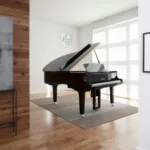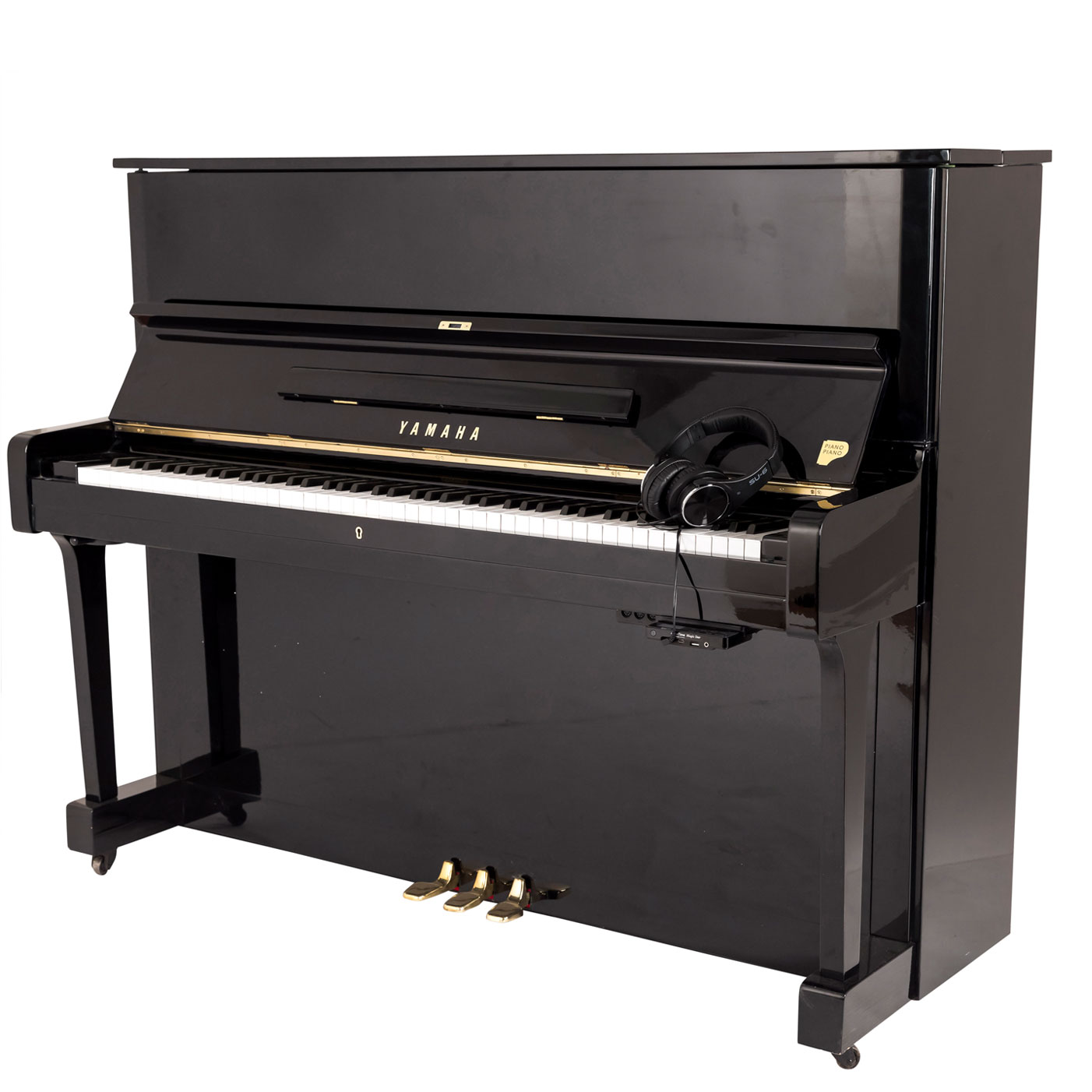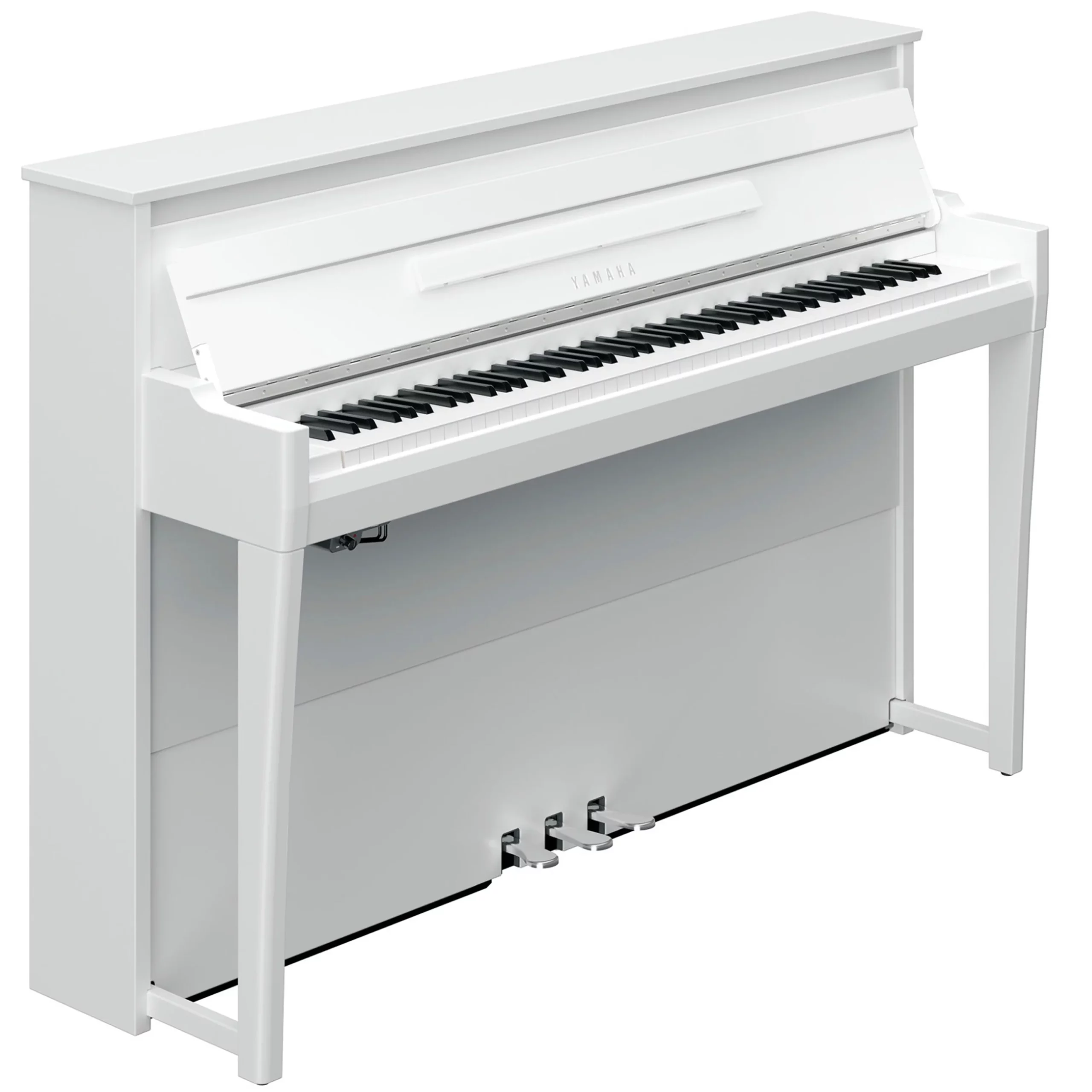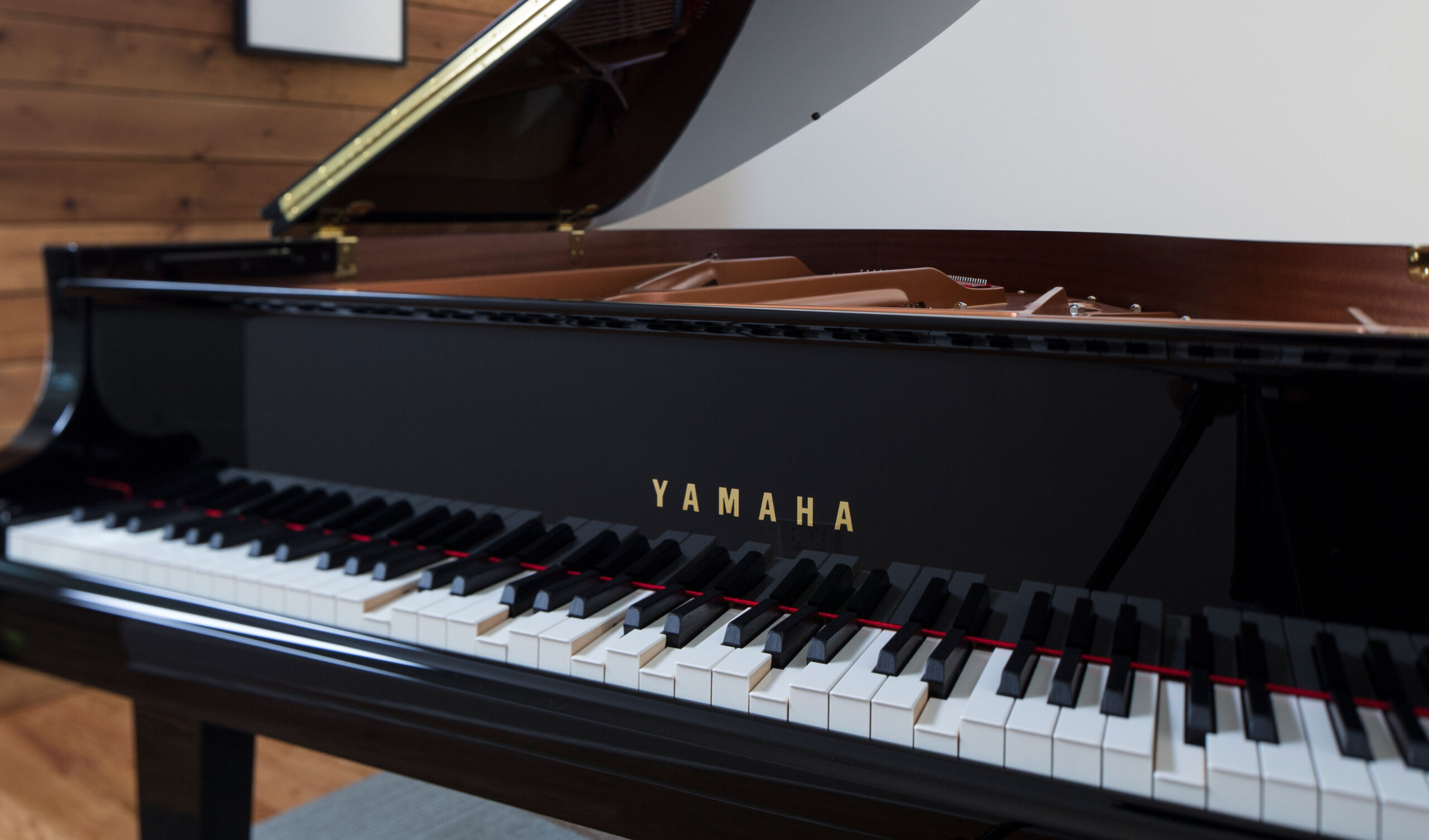Have you ever wondered how many black keys are on a piano? I know I have! As someone who has been playing the piano for years, this question has always intrigued me. But finding an answer can be tricky with so many different types and sizes of pianos out there.
In this article, we’ll delve into the fascinating world of piano key numbers and explore just how many black keys can be found on this beloved instrument. We’ll discuss everything from traditional pianos to electronic keyboards, and even take a peek at exotic variations like the harpsichord. So, whether you’re a curious beginner or an experienced pianist looking to expand your knowledge, join me as we unravel this musical mystery together!
So, how many black keys on a piano keyboard?
There are actually only 36 black keys on a piano, despite the common misconception that there are more. This is because each octave on a piano has 12 keys, but only 5 of them are black. The remaining 7 white keys make up the rest of the octave. So, while it may seem like there are more black keys due to their unique placement and contrast with the white ones, in reality they make up less than one-third of all the keys on a piano. It’s just another interesting fact about this beautiful and complex instrument!
Understanding the Layout of a Piano Keyboard
To really tap into the world of music, one has to understand the layout of a piano keyboard. It’s a lot simpler than you might initially think. The keyboard is essentially just an organized array of black and white keys. Each key corresponds to a specific musical note with its own unique pitch. Starting on the far-left side, we have what is called the “low” end or bass notes and as we move towards the right, each subsequent key plays a higher pitched note gradually transitioning towards the “high” end or treble notes.
Let’s break it down even further:
The modern piano keyboard consists of 88 keys – 52 are white and are known as natural keys (these represent all seven musical letters: A-G), while 36 are black also referred to as accidental keys which play sharp (#) or flat (♭) versions of natural notes.
- The pattern in front you–seven white keys broken up by five black ones–repeats itself across these 88 total keys.
- No matter where your eyes land on this beautiful instrument, whether you’re smack dab in middle C territory or hanging out near either extremity, that same pattern will be there.
- Understanding this constant repetition is like having an intricate map guiding you through melodies and harmonies on your journey through music.
This isn’t rocket science! Once you familiarize yourself with this layout (and perhaps even physically touch those glossy cool ivories), it feels less intimidating. And remember; behind every great pianist lies true appreciation for their instrument’s arrangement – because understanding how sounds relate visually on your piano can make learning new pieces faster and more fun!
Examining the Role of Black Keys in Music Composition
Let’s take a closer look at the piano. You’ll notice that it has a pattern of white and black keys. White keys on piano represent the seven natural notes in an octave (A, B, C, D, E, F and G), while black keys on piano represent sharp or flat variations of those natural notes. Without these black keys adding complexity and depth to music composition would be nearly impossible. They bring out nuances of harmony and melody which give pieces their unique emotional resonance.
The importance of having black keys on a piano cannot be overstated in music composition. When we consider some specific genres like jazz or blues for instance – they owe much of their distinctive sound to extensive use of these semi-tones.
- Blues Music: This genre heavily relies on “blue notes,” which are typically played on the piano black keys. Blue notes add tension and longing to songs making them more evocative.
- Jazz: Jazz composers often utilise dissonance – jarring sounds that contrast with typical harmonies – as an expressive tool within their compositions. Black key dissonances contribute largely towards this.
Black keys on piano also allow for modulation in compositions – changing from one key to another within a piece for variety or dramatic effect – providing us with emotionally charged peaks and valleys throughout[1]. So, composers don’t just randomly choose between white or black; there is intentionality involved in every note selected making each musical masterpiece richly layered yet accessible all at once.
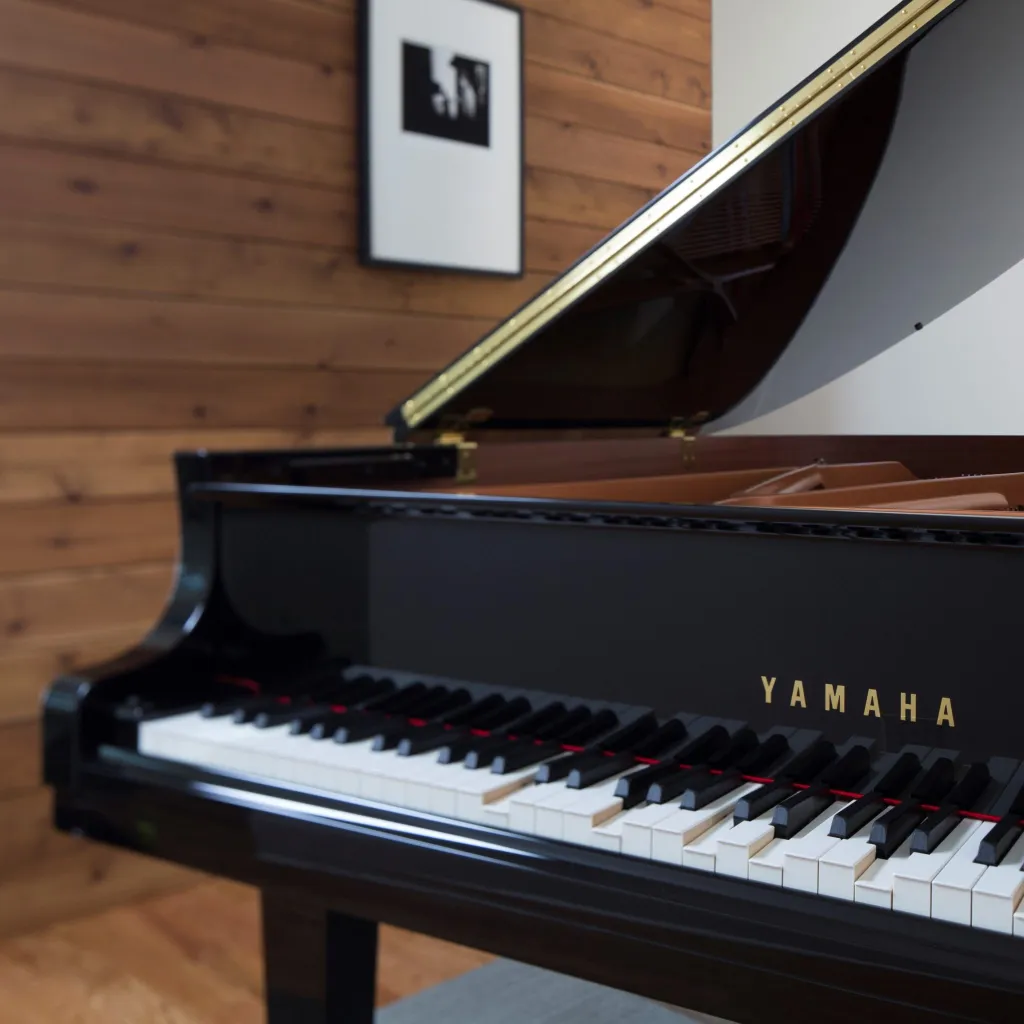 how many keys on a piano keyboard
how many keys on a piano keyboard
Read also: how much does it cost to move a piano
Comparing Traditional Pianos with Electronic Keyboards: A Look at Their Black Keys
The black keys on a traditional piano are synonymous with the mystique and allure of the instrument itself. They’re not just visually distinctive, standing out against their white counterparts, but they add depth to any composition by bringing forth the flat and sharp notes that give music its rich complexity. Made from ebony or sometimes covered in synthetic materials for better durability, these raised narrow stripes demand precision and finesse from the pianist’s fingers. Each slight touch results in a distinct sound – resonant, warm tones that echo within the wooden body of the piano.
Comparatively, electronic keyboards also have black keys but their function is largely similar to those found on conventional pianos – offering flat and sharp notes. Yet, there’s an undeniable difference in feel. Rather than hardwood coated with glossy veneer or polish as seen in traditional pianos, most electronic keyboard black keys are made from less luxurious plastic materials. The tactile sensation is decidedly different when you press down; it’s softer with less resistance due to absence of mechanical action beneath each key like hammers striking strings inside an acoustic piano. However, some advanced models try to mimic this experience through ‘weighted-key’ technology.
The sound produced too varies greatly. In a digital keyboard when you play a note it triggers an electronically sampled sound which may lack some organic vibrancy but can offer countless tonal possibilities. Ultimately though despite these differences both instruments allow musicians to explore the full range musical spectrum only differing in method of production & sonic texture provided by those mysterious black keys.
Exploring the Number of Black Keys on Different Types and Sizes of Pianos
If you’ve ever had the chance to gaze upon a piano, one of the first things that might catch your eye is the alternating pattern of white and black keys. These keys, each contributing a distinct note, come together harmoniously to bring forth music. For many aspiring pianists or curious observers like ourselves, it’s intriguing to understand how many black keys there are on different types and sizes of pianos.
Upright Pianos:
Let’s begin our exploration with upright pianos – these are generally found in homes due to their compact size. An average full-sized upright piano has 88 keys in total; out of which 36 are black. This comprises slightly less than half the total amount.
For smaller versions known as Spinet or Console pianos typically used for practice at home or in schools, while they also have 88 keys overall (including both sharps and flats), there isn’t any difference – 36 – is still the magic number for the quantity of black ones.
Grand Pianos:
On moving up across size and grandeur – we reach Grand Pianos. The majestic instruments gracing concert stages worldwide hold no surprise when it comes down to this peculiar detail: their key count matches exactly that of an upright piano! Even a Concert Grand Piano – arguably considered ‘the king’ among all pianos – gracefully hosts 36 black keys amidst its array.
So, there you have it– be it small or large, regardless if it’s standing tall against your wall or sprawled out elegantly across a stage; every standard modern-day piano shares an interesting commonality – they house 36 captivating ebony-toned notes waiting eagerly for musicians’ touch.
You may also like: clavinova yamaha piano
Unusual Variations: The Harpsichord and Its Unique Set-Up
The harpsichord, an incredibly distinctive and fascinating instrument, boasts a unique setup that sets it apart from its keyboard brethren. Unlike the piano, where felt-covered hammers strike the strings to generate sound, the harpsichord creates music through a completely different mechanism – plucking. Yes, you read that right! This instrument is designed with tiny plectrums which reach out and tenderly pluck each string when its corresponding key is pressed. The result? A crisp tone, as beautiful as it is distinct.
Let’s delve into some more peculiarities of this magnificent instrument. First off, tuning. With modern pianos or keyboards, we’re used to standard equal temperament tuning but with harpsichords it’s not always so simple. They may be tuned according to mean-tone temperament or well-temperament systems that were popular during Baroque era which gives them their own unique charm and adds depth to their sound.
- Strings: Harpsichords often have two or even three sets of strings for each note allowing performers to modify volume and tonal quality.
- Pedals: Unlike pianos which usually have 3 pedals providing control over dynamics (soft pedal), sustain (damper pedal) and sostenuto; harpsichords generally just use pedals for shifting between different sets of strings.
- Cases: Often lavishly decorated showing opulence in design unlike any other instruments in their family.
In essence, the appeal of a harpsichord lies in its idiosyncrasies, both aesthetic and functional – a delightful testament to human ingenuity manifested through music.
Conclusion: Unraveling the Mystery Behind Piano Key Numbers
Many people are often puzzled by the seemingly complex numbering system of piano keys. Behind this perplexing enigma lies a simple explanation that even young learners can grasp with ease. Each key on the piano has an assigned number; these numbers aren’t just random digits but rather provide a systematic method for locating notes and chords. Imagine how much more difficult playing would be without them! The black and white keys of the piano make up 88 beautiful elements of harmony, counting from left to right, starting at 1 and ending at 88.
How do they work?
These numbers are particularly crucial when it comes to reading sheet music or understanding digital interfaces in modern pianos. There’s an elegant pattern hidden underneath this number mystery – every octave contains seven white keys representing natural notes (A, B, C, D, E, F, G) and five black ones portraying sharp/flat notes (#/b). Together they form ‘twelve’ distinct tones within one octave.
- The first note “A” starts on key 1 which is technically A0 (in musical terms referring to octaves).
- This goes all the way up where C8 becomes key-number 88, marking our final destination.
Once you’ve grasped this concept, navigating through each specific pitch becomes as easy as counting numbers on a ruler! So shed any lingering fear or confusion about those intimidating numbered keys – they’re perhaps the greatest allies in your musical journey.



